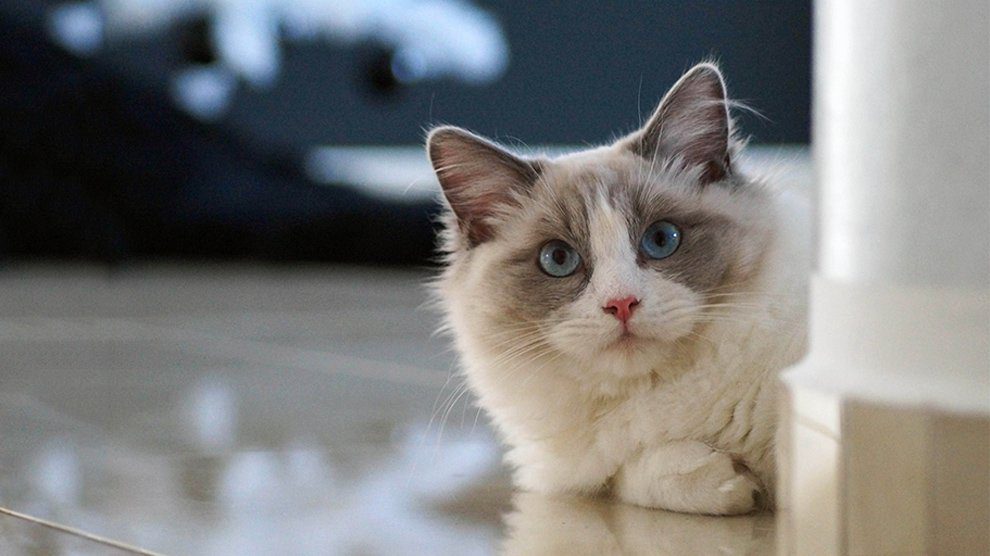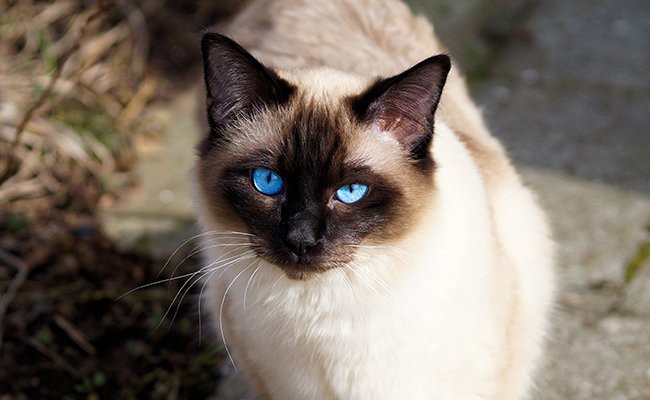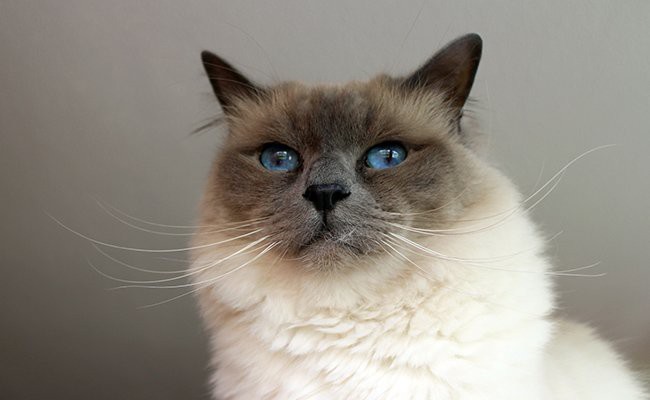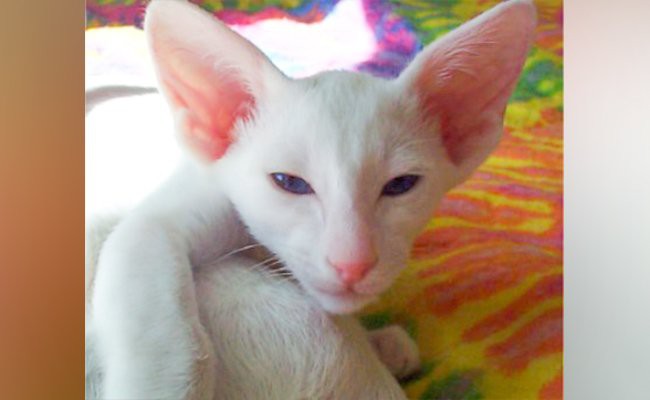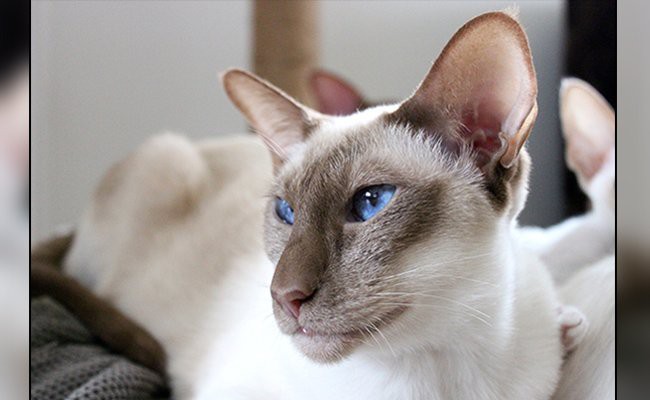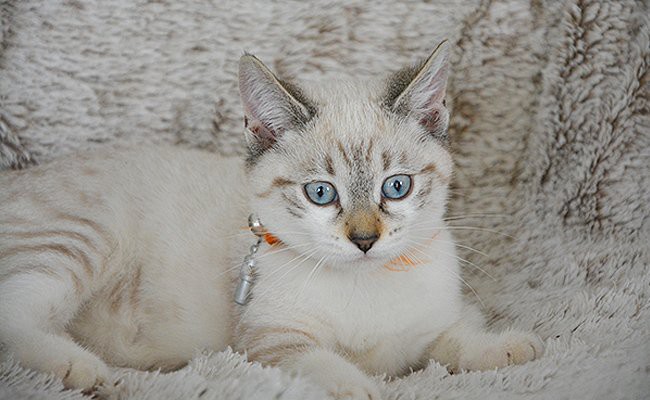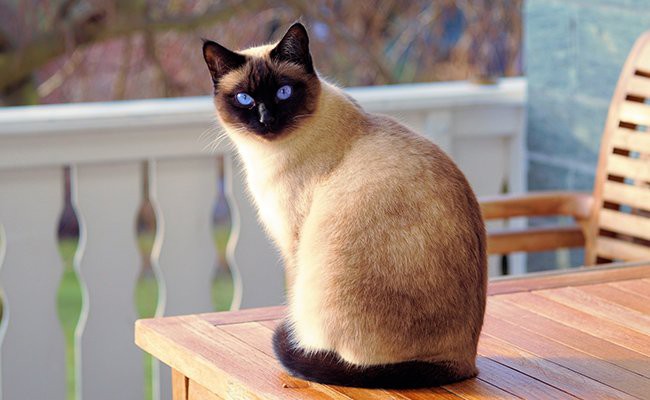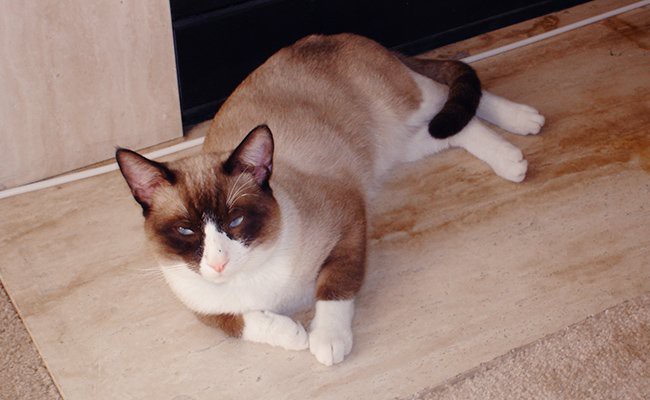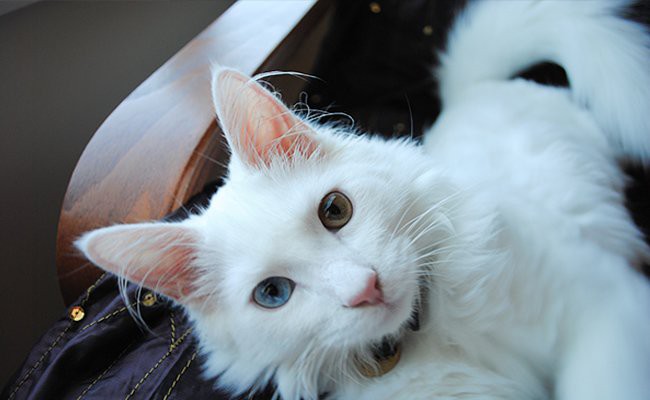Cat Pregnancy Calculator And Timeline
There’s something magical about cats with blue eyes, you agree, right? In fact, nothing comes close to the beauty of amazing blue eyes. Cat eyes, which are generally appealing, seem to display an extra sparkle when their appearance is blue.
Normally, blue peepers are present in quite a number of cat breeds, mainly those with pointed markings or white fur. Of course, this characteristic feature appears in other breeds too.
Let’s analyze and take a close-up look at 10 cat breeds that are blessed with turquoise blue eyes.
Balinese
- Native – United States
- Life expectancy – Between 9 to 15 years
- Size – Medium-sized cat
- Weight – Male: large: >12 lbs and Female: medium: 8-12 lbs.
- Height – range from 5 to 10 pounds
- Coat – Silky hair and a plumed tail
- Talkativeness – Normal
- Grooming pattern – weekly grooming is recommended
- Attention requirement – Moderate
- Activity level – Playful
- Colours – Lilac, chocolate and blue
Temperament
- Balinese can sense the mood of humans by staying close and showing affection.
- Generally, these cats with blue eyes are reputed for their intelligence.
- These are playful cats and also enjoy personal contact with their owners.
- It will be quite mischievous when it is boring.
Health Problems
1. Nystagmus
- Symptoms – Uncontrollable eye moment.
- Treatment – chemotherapy and radiation.
2. Liver amyloidosis
Leads to liver failure.
- Symptoms – unexpected weight loss, tiredness.
3. Heart disease
Hypertrophic cardiomyopathy and dilated cardiomyopathy.
- Symptoms – like feeling tired, leg swelling.
- Treatment – medication used to reduce blood clot formation.
4. Upper respiratory tract infections
- Symptoms – sneezing, cough, runny nose and fever.
- Treatment – increase humidity, clean eyes and nasal discharge.
Interesting facts
- Balinese cats are a vocal, active cat. High perches and cat trees are compulsory when these cats are around.
- Its slender figure conceals a powerful jumper.
- They will sit silently with their parents during purring.
- You can find Balinese leaping to the top of your doors, refrigerator and also bookcases effortlessly.
Birman
- Native – Myanmar
- Life expectancy – 12 to 16 years
- Size – medium size to large
- Weight – 5-8 kg or 11 to 17.6 lbs
- Height – 12 to 16 inches
- Coat – Medium-length coat with a silky texture and little undercoat
- Talkativeness – soft and pretty voice
- Grooming pattern – requires weekly grooming
- Attention requirement – require attention
- Activity level – active than other breeds
- Colours – colourpoints include lilac, cream, seal point and red with blue or chocolate
Temperament
- These cats with blue eyes follow you wherever you go like a dog.
- Some of them are talkative and let you know what they think.
- They have a unique posture that looks like hieratic temple statues.
Health issues
Birman cats are prone to health problems:
1. Obesity
Hefty weight of kitties, they are prone to feline obesity.
- Symptoms – Snoring, increased sweating, breathlessness and feeling isolated.
- Treatment – Feeding fewer calories as weight loss plan.
2. Hypertrophic cardiomyopathy
Heart disease
- Symptoms peak – pulse, abnormal heart sounds and difficulty in breathing.
- Treatment – medication to reduce the blood clot formation.
3. Kidney disease
- Symptoms – vomiting, diarrhoea and frequent urinating.
- Treatment – fluid therapy, therapeutic diet.
Interesting facts
- Birmans possess looks that match their distinct personality.
- These cats are the sacred kitty.
- As it is a social breed, it needs regular interaction and does not like to stay alone.
- All Birman kitten is born in white colour, it takes a couple of weeks to show their own colour.
Foreign White
- Native – England
- Life expectancy – 15 to 20 years
- Size – average size
- Weight – 8 to 10 lb
- Height – 8 to 10 inches
- Coat – Pure white, short and close-lying
- Talkativeness – High
- Grooming pattern – Weekly once
- Attention requirement – High
- Activity level – Playful
- Colours – White
Temperament
- They are highly intelligent and completely devoted to their owner.
- These are strong, lean, muscular cats with striking looks
- Foreign white cats are reputed for their refinement, elegance, wedge-shaped head, almond-shaped blue eyes and length of the body.
Health issues
Foreign Whites suffer from various health problems:
1. Waardenburg-syndrome
Rare genetic disorder.
- Symptoms – deafness.
2. Mammary tumours
Common feline tumors.
- Symptoms – Skin ulceration, sores and fever.
- Treatment – Ovariohysterectomy will reduce the incidence of a mammary tumour.
3. Hydrocephalus
Anomalous disease in the brain.
- Symptoms – Wetting, sleepiness, blindness and excess vocalization.
- Treatment – Drug therapy used to reduce seizure activity.
Interesting facts
- Foreign Whites are highly intelligent cats with a loving personality.
- It is a type of talkative and demanding cat.
- It suits as the best companion for singles and elderly individuals.
- They thoroughly enjoy your company such as lounging in your lap.
- Generally, they are playful and highly curious.
Himalayan
- Native – United Kingdom
- Life expectancy – 9 to 15 years
- Size – Medium-size cat
- Weight – 7 to 12 pounds
- Height – 11-13 inches
- Coat – Silky coat with colour-point patterning
- Talkativeness – High
- Grooming pattern – Daily grooming is required
- Attention requirement – High
- Activity level – Normal
Temperament
- Generally, these cats are very intelligent and make good companions.
- They are known for their friendliness and social behavior.
- Of course, Himalayans depend on humans for their protection and companionship.
- Himalayans love to play games such as, fetch and getting mischief.

Health issues
Himalayans are susceptible to various health problems:
1. Hairballs
Grow inside cat’s stomach.
- Symptoms – Lethargy, vomiting, gagging and diarrhoea.
- Treatment – Combing hair daily will reduce hairballs.
2. Saggy and painful skin
Serious medical condition known as cutaneous asthenia.
- Symptoms – Hair loss, vomiting, weight loss and dehydration.
- Treatment – Prolonged supplement of vitamin E, C, zinc and collagen will manage this condition.
3. Breathing problem
Associated with flat pug nose may cause nasal passage and sinuses.
- Symptoms -Panting, rapid breathing and laboured breathing.
- Treatment – medication is required.
4. Polycystic kidney disease
Occurs due to kidney-related clinical signs, which in-turn cause kidney failure.
- Symptoms – Weight loss, anaemia, vomiting and high blood pressure.
- Treatment – Feeding the cat with potassium supplements.
Interesting facts
- As they are very intelligent they enjoy learning tricks.
- Due to their short legs, they don’t jump or claim like other breeds.
- These cats are beautiful, loyal with exotic looks.
- Himalayan cats are calm, fun and entertaining.
- According to the Cat Fanciers Association, Himalayans are second popular breed.
Javanese
- Native – United States
- Life expectancy – 10 to 15 years
- Size – Medium-size cats
- Weight – Male: 12 to 16 pounds and Female: 8 and 12 pounds
- Height – 18-20 inches
- Coat – Silky, medium-length coat
- Talkativeness – High
- Grooming pattern – Once a week
- Attention requirement – High
- Activity level – Normal
Temperament
- Javanese are active, vocal cats.
- They are loyal to the core, loving and affectionate.
- Since Javanese cats are highly intelligent, they can understand your emotions
- It looks straight into the human eye and obeys commands
- Generally, Javanese are playful but they require daily attention and are very friendly towards humans.
- They are easily trainable
Health issues
Javanese cats are susceptible to several health issues including:
1. Asthma
This is one of the most common bronchial diseases.
- Symptoms – Coughing, mouth breathing, and wheezing.
- Treatment – Medication will open the breathing passage and reduces airway inflammation.
2. Lymphoma diseases
Caused due to immunodeficiency virus.
- Symptoms – Panting, vomiting, diarrhoea and depression.
- Treatment – Chemotherapy and radiotherapy advised by doctors.
3. Crossed eyes
4. Progressive retinal atrophy
- Symptoms – Dilated pupils, night blindness.
- Treatment – Administering vitamin and antioxidant supplements.
5. Congenital heart effects
Congestive heart failure.
- Symptoms – Rapid breathing, hind limb paralysis, and swelling.
- Treatment – Medication will relax the heart muscle and slows heart rate.
6. Gastrointestinal disorders
Megaesophagus.
- Symptoms – Vomiting, diarrhoea, increase or decreased thirst.
- Treatment – Feeding them with highly digestible foods.
7. Bronchial diseases
Asthma and chronic bronchitis.
- Symptoms – Breathing through the mouth, shortness of breath and breathing difficulty.
- Treatment – Anti-inflammatory medications are given.
Interesting facts
- Also called as “Lazy man’s long hair”, Javanese cats need occasional bathing and grooming.
- In fact, it can perform all types of kitty acrobatics.
- Javanese cats are excellent jumpers.
- These smart cats are known to open drawers, doors and welcome you at the door when you are back at home.
Ojos Azules
- Native – New Mexico
- Life expectancy – 10 to 12 years
- Size – Medium
- Weight – 9-12 lbs
- Coat – Short, fine and very silky
- Talkativeness –Average
- Grooming pattern – Very little
- Attention requirement – High
- Activity level –High
Temperament
- These cats are highly friendly and playful and they offer good companionship
- They love children and also takes part in children games.
- These cats adjust to new surroundings quite easily and are more social than other cat breeds
Health issues
Some of the health issues faced by Ojos Azules include:
1. Cranial Deformity
It is a congenital deformity affecting the infant skull.
- Symptoms – Bony ridges, vomiting and facial abnormalities.
2. Small Curled Tail
3. Stillbirth
- Symptoms – Drooling, pain while walking and stiffness in gait.
Interesting facts
- Ojos Azules is a very gentle, loyal, affectionate, active, intelligent, playful and social breed.
- The word “Ojos Azules” means “blue eyes” in Spanish.
- In fact, Ojos Azules cats are fond of dogs too.
- They enjoy playing with kids and pets.
- Ojos Azules cat first arrived on the scene in 1984. Again, these cats are not as special as previously thought.
Ragdoll
- Native – United States
- Life expectancy – 12-15 years
- Size – Large
- Height – 9-11 inches
- Weight – 8-20 lb
- Coat – Plush coat
- Talkativeness – Normal
- Grooming pattern – Once a month
- Attention requirement – High
- Activity level – Normal
Temperament
- Ragdolls are known as “puppy cats”.
- These cats are advertised as cats with floppy, calm, and docile nature
- In general, Ragdolls follow the owner wherever they go, and they do not prefer spending time alone
- It enjoys games and they are highly mischievous
- They have the interest to walk, learn on a leash.

Health issues
Ragdolls suffer from health issues including:
1. Hairballs
The growth of hairballs inside the stomach.
- Symptoms – Lethargy, vomiting, gagging and diarrhoea.
- Treatment – Combing hair daily will reduce hairballs.
2. Heart problems
Hypertrophic cardiomyopathy.
- Symptoms – Weak pulse, lethargy and loss of appetite.
- Treatment – Medication to reduce blood clot formation.
3. Feline Mucopolysaccharidosis
- Symptoms – Paralysis, mental disorder and bone degeneration.
4. Grooming issues
- Symptoms – Biting skin and coat, swelling under the skin and persistent scratching.
Interesting facts
- Lap cats ragdolls are friendly and act as good companion.
- They come in the variety of shades, ranging from seal, red, cream and blue.
- Ragdolls are widely popular for their rabbit-like, silky coat.
- These cats are very affectionate and easy going by nature.
- Created by Ann Baker in 1963, Ragdolls grew in popularity in a very short duration.
Siamese
- Native – Thailand
- Life expectancy – 11-15 years
- Size – medium sized
- Height – 8-10 inches
- Weight – 8-10 lb
- Coat – short, fine, glossy and lies close to a body
- Talkativeness –need to vocalize
- Grooming pattern – weekly grooming required
- Attention requirement – need attention
- Activity level – playful
Temperament
- They are playful, vocal, nosy, adventurous and jealous.
- It will entertain itself by turning on faucets.
- Siamese loves attention and attaches to all age people.
Health issues
Problems that affect Siamese cats include:
1. Amyloidosis
Caused due to misfolded and complex proteins known as amyloids.
- Symptoms – weight loss, vomiting, diarrhoea and depression.
- Treatment – feed with kidney support nutrition and necessary medication.
2. Asthma
Chronic inflammation of small passageways of cat’s lungs.
- Symptoms – wheezing, persistent cough, blue lips and gums and open mouth breathing.
- Treatment – medication will open a breathing passage and used to reduce airway inflammation.
3. Bronchial disease
Small airway disease.
- Symptoms – open mouth breathing and breathing difficulty.
- Treatment – anti-inflammatory medications are given.
4. Aortic stenosis
Occurs during aortic value narrows.
- Symptoms – stunning growth, fatigue, heart murmur and rapid breathing.
- Treatment – balloon valvuloplasty will help to widen the obstructed value.
Interesting facts
- They used to express their feeling with an assortment meow.
- Siamese is heart sensitive due to their gene.
- It is a “cool” cat.
- They are mostly depending on the human.
Snowshoe
- Native – United States
- Life expectancy – 9 – 15 years
- Size – average
- Weight – 2.5 to 5.5kgs
- Coat – Smooth and short
- Talkativeness – naturally talkative
- Grooming pattern – Moderate Maintenance
- Attention requirement – require attention
- Activity level – active
Temperament
- Snowshoe is intelligent, sweet-tempered, clever and instructed with many tricks.
- It needs a little friendly relationship.
- They need games and toys for amusement.
- As it is playful it follows humans in-house.
Health issues
1. Crossed eyes
- Symptoms – head tilting, lethargy, weakness and loss of appetite.
2. Kinked tails
Mostly harmless, striking tails against wall lead to kinks.
Interesting facts
- They are playful, active and lively cats.
- These cats with blue eyes are the best companion for kids and other pets.
- Usually, they are social and adore their owners.
- They are less demanding, soft voice and more melodic.
Turkish Angora
- Native – Turkey
- Life expectancy – 9-14 years
- Size – small to medium
- Height – 8-10 inches
- Weight – 7-14 lb
- Coat – medium-length coat
- Talkativeness – talkative
- Grooming pattern – twice a week
- Attention requirement – attention required
- Activity level – playful
Temperament
- Generally, these cats with blue eyes are outgoing, affectionate, docile and intelligent.
- As it has unique look and one the most attractive breed.
- They are people-oriented, playful and active.
- It can able to understand human emotions.
Health issues
1. Hypertrophic cardiomyopathy
Heart disease.
- Symptoms – lethargy, weak pulse and abnormal heart sound.
- Treatment – medication to reduce blood clot formation.
2. Hairballs
Grow inside cat’s stomach.
- Symptoms – lethargy, lack of appetite, vomiting, gagging and diarrhoea.
- Treatment – combing hair daily will reduce hairballs.
3. Fleas
- Symptoms – hairballs, hair loss, skin irritation and increased grooming.
- Treatment – use metal flea comb and comb from head to tail twice a day.
Interesting facts
- They are very intelligent and can easily climb to the highest height.
- It gives birth to four kittens.
- Turkish angora is a smart dog like the cat.
- This cat is devoted to its human family.
- And it’s not fair to leave it alone for a long time.

